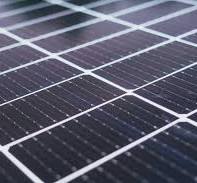The semi-annual report of A-shares has finally been settled.
The photovoltaic industry performed badly, and the performance of the crystalline silicon industry chain has declined sharply. Except for the profits of Canadian Solar, JinkoSolar and Trina Solar, the other leading companies are basically losing money.
The stock price continues to fall, and everyone is asking “Has the photovoltaic industry bottomed out?”
01
Performance bottom
What is bottoming out?
Mainly performance bottom and valuation bottom, let’s look at performance bottom first.
The photovoltaic crystalline silicon industry chain has seen a sharp decline in performance or even a large loss. The main reason is that the imbalance between supply and demand has led to a drop in prices, reduced capacity utilization and a decline in gross profit margin in the industry chain. At the same time, it may also be accompanied by impairment of various assets such as accounts receivable, inventory, and fixed assets, further eroding net profit.
Among them, gross profit margin is the key, and the main determining factor is the pricing system and the derived capacity utilization rate under the upstream and downstream game of the industry chain.
At present, the upstream and downstream game of core links such as silicon materials, silicon wafers, battery cells and components is still ongoing, the price system is still fragile, and the gross profit margin cannot be easily bottomed out. The silicon wafer link has recently tried to counterattack, but the overall situation has not yet been resolved.
In fact, the impairment of various assets is more important.
Since the quarterly and semi-annual reports of A-shares are unaudited, while the annual reports need to be audited by accountants, it can be expected that under the caliber of the auditors, various assets will face further impairment under this year’s annual report. Coupled with the need for financial cleansing and restarting management, the end of April next year will surely be a “spring thunder”.
Therefore, although the semi-annual report has already reflected the performance, in the context of no improvement in operating performance (gross profit margin), further “cleaning” of various assets will inevitably lead to continued bottoming of performance.
This is basically a certainty.
02
Valuation bottom
Performance has not yet bottomed out, so what about valuation?
Since performance has not yet bottomed out, it is already clear, so the capital market must have reflected part or even all of it, which is also the fundamental reason for the decline of the photovoltaic sector.
Generally speaking, the valuation bottom will precede the performance bottom.
If everyone agrees that this year’s annual report is the performance bottom, then the valuation bottom will inevitably come before the annual report season at the beginning of next year, or even has already arrived.
On the contrary, if everyone expects that next year’s performance will be worse, and the performance bottom will not be reflected until the beginning of the next year or even later, then the valuation bottom will continue, and it is too early to rebound.
Of course, there is also an expected change.
If everyone expects that there will be worse situations and worse performance, then the valuation will go down further; if everyone expects that there will be no worse situation, but there is no improvement for the time being, then it can only hover at the bottom.
In short, the performance bottom is related to expectations and changes.
03
Bottoming order
The above only discusses the overall situation of the crystalline silicon industry chain.
Due to the different business attributes of core links such as silicon materials, silicon wafers, battery cells and components, there are great differences between them. Therefore, the bottoming order, whether it is the performance bottom or the valuation bottom, will naturally be different and there will be a sequence.
Therefore, dialectical analysis is needed.
This is also a topic of concern to many friends. Who will bottom out first? Who will bottom out last?
The answer to this topic should not be discussed publicly online, as it is easy to cause controversy. After all, different people have different opinions.
Here we only discuss some analytical logic. In fact, the photovoltaic industry has gone through several cycles and there are still historical experiences that can be referred to.
The bottoming order of different links is mainly related to several factors: one is the imbalance between supply and demand of production capacity (including the elasticity of supply and demand), the second is price elasticity, the third is the discourse power of upstream and downstream games (including the concentration of downstream customers), and the fourth is the proportion of material costs/capital expenditures (operating leverage).
From these dimensions, the components should be the first to hit the bottom, but the integration of leading enterprises has diluted this conclusion, but the profitability of traditional component giants Canadian Solar, JinkoSolar and Trina Solar at least proves this point.
As for other links, everyone can figure it out.
In any case, the game of the industrial chain is an eternal topic in photovoltaics.
This is related to the characteristics of the photovoltaic industry. The crystalline silicon industry chain is long, and the cost of the previous link accounts for a high proportion of the next link. The technology, process, equipment, etc. of each link are completely different. There are different barriers to entry in each link, and each link is controlled by giants, and disputes are endless.
Today, it is time for in-depth game in the photovoltaic industry chain, which will profoundly affect the subsequent direction of the photovoltaic industry.

